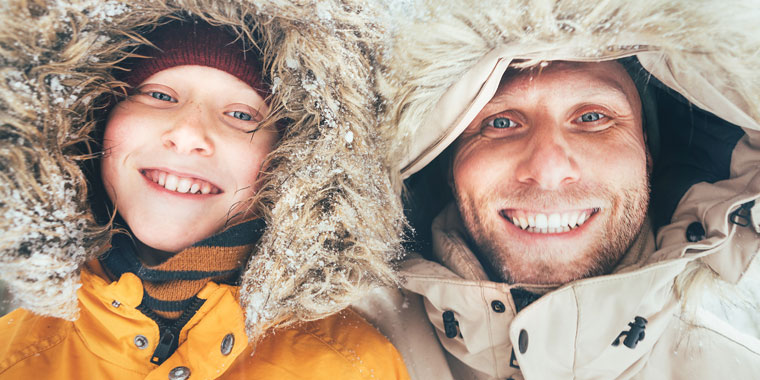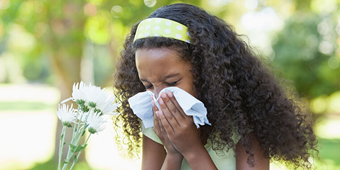As the Thermometer Plunges: How To Stay Safe This Winter

Answer a few questions and we'll provide you with a list of primary care providers that best fit your needs.
The weather outside is frightful, to borrow from a popular Christmas song.
The Dayton area forecast calls for temperatures down to the single digits this holiday weekend, with wind gusts up to 30 miles an hour, and wind chills as low as 30 below.
How can you keep your family comfortable and safe during winter weather like this – outdoors and indoors? Family physician Elizabeth L. Barrett, DO, shared the following advice with Premier Health Now.
Staying Safe Outdoors
One of the greatest health risks associated with cold weather, Dr. Barrett says, is hypothermia. That’s an abnormally low body temperature caused by low temperature exposure, which leads to your body losing heat faster than it generates it.
“If you’re going to be outside, especially as temperatures drop lower than zero, be smart,” she says. This means:
- Wear layers of clothing to trap heat
- Wear a hat, “because we lose a lot of heat from our heads”
- Also wear a scarf and gloves or mittens
- Limit time outdoors. “Do things outdoors in short increments rather than long periods of time.”
- Be aware that exposure to cold puts an added strain on your body when you have certain health conditions, like heart disease or respiratory conditions
Men are more likely to die from hypothermia, Dr. Barrett says, as they may be more likely to be called on to work outdoors – shoveling snow, for instance. “In the United States, on average, about 1,300 people die each year from hypothermia. Two-thirds of those people are men.”
Being properly dressed for the cold also helps shield you from wind and the effects of wind chill, which can “blow your body heat away.” Being properly covered against the elements can also protect your skin from another extreme cold weather risk – frostbite.
Signs of hypothermia for adults include:
- Shivering
- Exhaustion
- Confusion or memory loss
- Difficulty using your hands
- Drowsiness
Signs of hypothermia for infants, which “are much harder to detect,” Dr. Barrett says, include:
- Bright red, cold skin
- Very low energy
Those most at risk in extreme cold, she says, are “the very young and the very old. Infants, especially less than a year old, can’t regulate their temperature very well.”
She adds, “Babies can’t generate enough heat, even from shivering.”
If you think your baby is too cold, turn up the heat in her room, swaddle her in a blanket, or hold her against your body, especially skin-to-skin, Dr. Barrett advises. Or call your doctor or go to the emergency room, if necessary.
Staying Comfortable And Safe Indoors
Particularly for younger and older members of your family, Dr. Barrett recommends setting the thermostat between 68 and 74 degrees. “The young and old,” she explains, “aren’t very good at detecting they’re cold.”
If you plan to warm up around a fireplace or woodstove this winter, she says, “be sure the chimney has been cleaned or at least checked” – to help prevent a fire or carbon monoxide poisoning. Space heaters should also be checked to make sure they’re in safe working condition.
Carbon monoxide, a gas produced by burning fuels like gas, oil, kerosene, wood, or charcoal, can be life-threatening. When breathed in, carbon monoxide replaces life-sustaining oxygen in your blood.
Also to protect your family from carbon monoxide poisoning have a working carbon monoxide detector in your home and don’t run your car or truck engine in the garage, even with the overhead door open. Drive it outside instead.
Signs of carbon monoxide poisoning include:
- Headache
- Dizziness
- Nausea
- Vomiting
- Confusion
- Weakness
The Centers for Disease Control and Prevention offers more guidance on staying safe this winter.
Answer a few questions and we'll provide you with a list of primary care providers that best fit your needs.
Source: Elizabeth L. Barrett, DO, Premier Health Primary Care - Beavercreek





